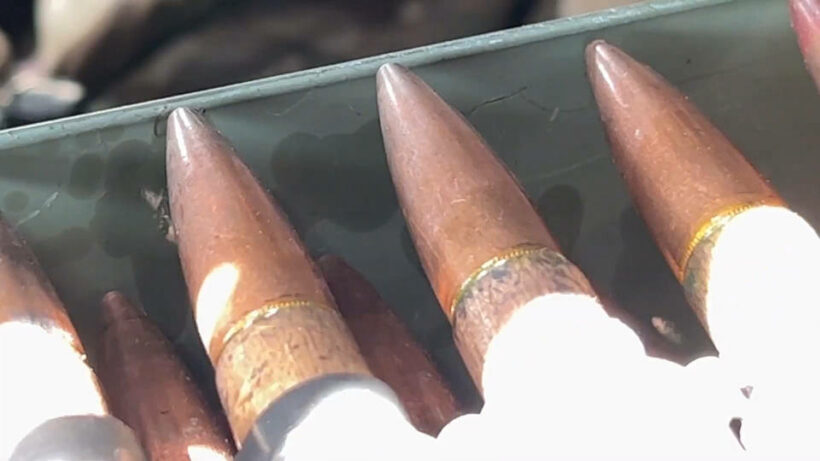A year after the Russian invasion, and with no end to the war in sight, voices speaking of defeating and expelling Putin’s troops alternate with those advocating that Kiev accept losses of territory in exchange for a cessation of hostility. Biden seems to be more interested in defeating Russia than seeking peace in Ukraine.
By Isabella Arria
US President Joe Biden’s surprise visit to Kiev and his announcement of $460 million more in military aid is a slap in the face to Moscow on the eve of the first anniversary of the invasion of Ukraine. Russia was warned of the visit hours in advance to avoid an ‘accident’ that could lead to escalation.
The visit underlines what is already evident from the massive money and arms shipments to Ukraine: the US and its de facto European allies are fully engaged in the war with Russia, even if for now it is Ukrainian and Russian soldiers who are dying, largely killed by Western weapons.
“One year after, Kyiv is still standing. Ukraine is still standing and democracy is still standing. America stands with them and the whole world stands with them,” Biden proclaimed, surrounded by American and Ukrainian flags.
Biden said he wanted there to be no doubt about Washington’s “unwavering” support for Kiev and announced a new package of military aid: artillery munitions, howitzers and Javelin missiles, a man-portable weapon designed to destroy tanks and other heavy vehicles.
In addition to that military aid, Biden said he would impose new sanctions on Russia this week aimed at hitting Russian elites and companies that are helping the Kremlin evade sanctions imposed by the US and other countries since the start of the war. The US leader insisted that “Putin’s war of conquest is failing and that he was wrong to believe that Ukraine was weak and the West was divided”.
Standing next to Biden, Zelensky said the US is considering supplying his country with a type of long-range missile that so far has not been sent to Kiev, which he believes is necessary for it to deal with a new Russian offensive and retake Moscow-occupied territories in the east and south of the country.
This is the first time Biden has visited Kiev since the start of the war, although First Lady Jill Biden travelled to the Ukrainian city of Uzhhorod, on the border with Slovakia, on 8 May last year. French President Emmanuel Macron, German Chancellor Olaf Scholz, Canadian Prime Minister Justin Trudeau and Spanish Prime Minister Pedro Sánchez have already visited Kiev.
More weapons wanted
The West’s big headache at the moment is how to maintain the level of arms aid to Kiev amid growing shortages in national armies and the refusal of – among others – Latin American countries to provide military assistance. According to Estonia, the EU needs to invest 4 billion euros to produce one million shells. And it needs to do so urgently.
“It is the most urgent issue and if we fail in this, the outcome of the war is at risk,” said EU diplomacy chief Josep Borrell, who described the current shortage situation as a water reservoir, which loses more than it takes in and will eventually run out at this rate. The immediate priority is to donate stockpiles to Ukraine, but at the same time countries are running out of internal protection.
Foreign ministers on Monday held a first discussion on the idea of launching a joint arms purchase. It would work in a similar way to the common procurement of vaccines during the coronavirus pandemic, coordinated by the European Commission, which would mark the total involvement in the war, which is what Washington is seeking.
Meanwhile, Russia
A few days before the anniversary of the start of the war in Ukraine, Russian President Vladimir Putin announced on Tuesday that his country will suspend its compliance with START III or New START, the last nuclear disarmament treaty still in force between Russia and the United States.
Putin has clarified that “Russia is not abandoning, but only suspending” the treaty agreed with the US, which expires in 2026, and blamed Washington for this decision. He said that “if the US carries out nuclear tests with a new type of strategic weaponry, Russia will also carry out such tests”.
The Russian president described NATO’s demand that Russia comply with the treaty, which includes inspections of its nuclear facilities, as a “theatre of the absurd”. He therefore urged the Atlantic Alliance to join the treaty, so that countries such as the UK and France, which have nuclear arsenals, would be part of it.
NATO Secretary General Jens Stoltenberg of Norway said Putin’s decision “dismantles” the arms control architecture. Meetings between the US and Russia over the treaty broke down with the outbreak of war in Ukraine.
The plan was to reduce the number of nuclear warheads by 30 per cent to 1,550 per country, limit the number of intercontinental ballistic missiles to 700, those deployed on submarines and strategic bombers to 700, and reduce the number of intercontinental missile launchers, underwater ballistic missile launchers and nuclear-equipped strategic bombers, whether deployed or not, to 800.
A year into the Russian invasion, and with the war’s no end in sight, the talk of defeating and expelling Putin’s troops alternates with calls for Kiev to accept losses of territory in exchange for a cessation of hostility. Biden seems to be more interested in defeating Russia than seeking peace in Ukraine.
Dan Smith, director of the Stockholm International Peace Research Institute (SIPRI) foresees a prolongation of the war in Ukraine, with a bigger food crisis than in 2022, and points out that beyond high-sounding declarations, “the EU is a minor geopolitical player compared to the US, China and Russia”.
Isabella Arria, Chilean journalist based in Europe, analyst associated with the Latin American Centre for Strategic Analysis (CLAE, estrategia.la).






